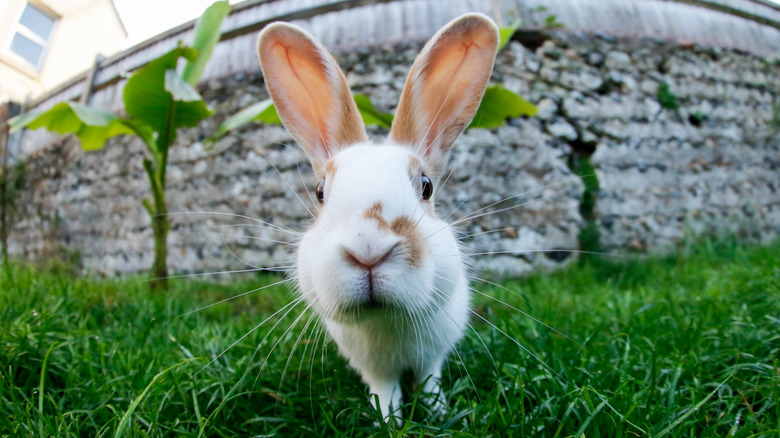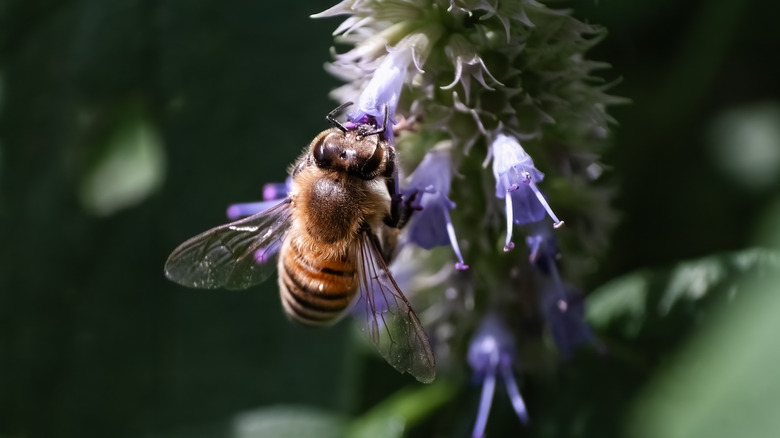The Aromatic Purple Rabbit-Resistant Plant That Thrives When Grown In Containers
Containers are a simple solution for some common garden quandaries. They turn a patio or deck into a lush landscape, and are a straightforward introduction to gardening for children and newbies. Anise hyssop (Agastache foeniculum) is an easy-to-grow plant that thrives in containers. Its purple flowers attract beneficial pollinators like bumblebees, butterflies, and hummingbirds — while rabbits and deer tend to leave it alone. The aroma of the foliage, commonly thought to evoke anise, is released when touched and accounts for the plant's name. Some consider the smell to be less like licorice and more like French tarragon or basil. The flowers themselves are unscented, but the nectar they produce attracts pollinators. Purple is the most common anise hyssop color, but cultivars like the white 'Alabaster' and red 'Black Adder' are available.
In general, rabbits avoid plants with strong odors or leaves and stems that are rough or hairy. Since hyssop has smooth foliage, its pungent aroma is what deters them. If you're growing hyssop in containers to keep them from munching on your garden — rather than for their fragrance, blooms, or pollinator benefits — place the containers next to plants that rabbits love to eat. There's no guarantee that they won't simply skip the hyssop and head for the plants they love, so consider other deterrents to protect your young plants, like eliminating hiding places or building fences.
Growing and using anise hyssop
Anise hyssop, named Herb of the Year by the International Herb Association in 2019, needs full or partial sun and well-drained soil to thrive in zones 4 to 8. Use pots that are at least 16 inches deep and have good drainage to give container-grown anise a good start. Choose a commercial potting mix, not garden soil, or create your own with equal parts perlite, peat moss, and potting mix. Keep the soil moist but not soggy to prevent root rot, and place the container in an area with good air flow to reduce the likelihood of rust infections. It's unlikely you'll need to fertilize, but if you do, use a soluble solution sparingly. Anise hyssop can be started from seed indoors about a month before the last frost in the spring and transplanted to pots as seedlings. Deadhead regularly by removing old or faded flower heads to promote new blooms.
Fresh or dried, anise hyssop is more than a pretty addition to cut flower crafts. Historically, Native Americans used the plant as a treatment for fevers and respiratory ills, and as a salve for burns. Fresh leaves and flowers can be added to add flavor to a salad, to brew a cup of tea, or to make jelly. You'll want to harvest the flowers when they're just starting to fade for drying. Once dried, use them in potpourri or as you would any other culinary herb. The dried leaves have also been used to help relieve coughs and fevers.

